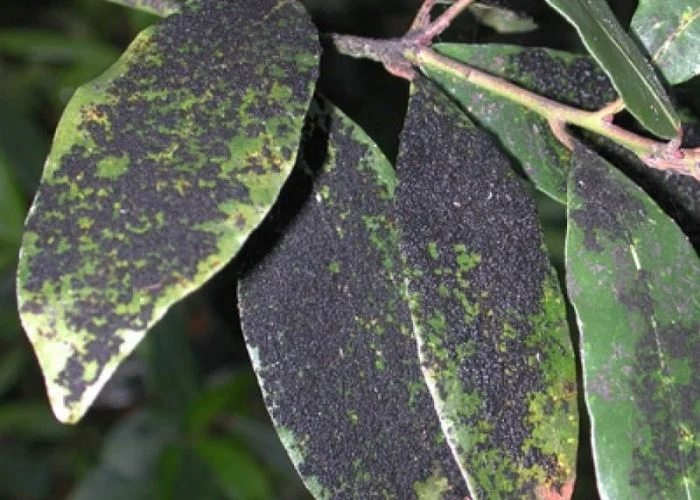
Sooty Or Bold
Fungal Complex
Pathogen:
Fungus
Type:
Risk:
INTERMEDIATE





DESCRIPTION
Pathogen description
Sooty mold or sooty mold is caused by a complex of fungi, mainly species of the genus Capnodium, Cladosporium and Scorias. These fungi develop on the surface of the leaves and branches of plants, feeding on the honeydew secreted by insects such as aphids, scale insects and whiteflies. The spores of these fungi are carried by the wind and deposit on the surfaces of plants where honeydew is present. Under favorable humidity and temperature conditions, the spores germinate and form a network of dark mycelium on the molasses, creating a characteristic black layer. This mycelium can grow and spread, covering much of the affected plant. As the fungi develop, they can produce new spores that are dispersed again, perpetuating the infestation.
Disease description
Sooty mold affects plants by covering their surfaces with a black layer of fungus, which interferes with photosynthesis and plant respiration. This can lead to a reduction in plant growth and vigor, and in severe cases, the death of affected parts.
- Leaves covered by a black or grayish layer.
- Reduction of photosynthetic capacity.
- Yellowing and premature leaf fall.
- Reduced growth and general weakness of the plant.
- Difficulty in transpiration and leaf respiration.
- Presence of honeydew-producing insects such as aphids and mealybugs.
- Affectation of the aesthetic appearance of the plant.

TEMPERATURE AND HUMIDITY
20°C a 30°C
60% a 90%

VOIES DE TRANSMISSION
Wind, Direct contact between plants, Honeydew-producing insects, Contaminated tools, Contaminated irrigation water

Chemical treatments
CONTROL
• SULFUR 80% [SC] P/V
• SULFUR 80% [WG] P/P
• SULFUR 80% [WP] P/P
• COPPER OXYCHLORIDE 35% (exp. in Cu) [WG] P/P
Treatments authorized in organic farming
• SULFUR 80% [SC] P/V
• SULFUR 80% [WG] P/P
• SULFUR 80% [WP] P/P
• COPPER OXYCHLORIDE 35% (exp. in Cu) [WG] P/P
Biological control
-
Preventive treatments
• SULFUR 80% [SC] P/V
• SULFUR 80% [WG] P/P
• SULFUR 80% [WP] P/P
• COPPER OXYCHLORIDE 35% (exp. in Cu) [WG] P/P
- Control the populations of honeydew-producing insects through the use of specific insecticides and the introduction of natural enemies.
- Maintain good hygiene in the crop, eliminating infested leaves and branches to reduce the source of spores.
- Apply specific fungicides for sooty mold to the affected parts of the plant.
- Improve air circulation and reduce humidity around plants through proper pruning and correct spacing.
- Avoid sprinkler irrigation and prefer drip irrigation to minimize moisture on the leaves.
- Clean the affected leaves with mild soap and water to remove the layer of sooty mold.
- Maintain balanced nutrition in plants to strengthen their natural resistance to diseases.
Recommendations
*The recommended treatments are recommendations based on the authorities' databases and do not replace in any way the guidelines established by the legislation of each country.





